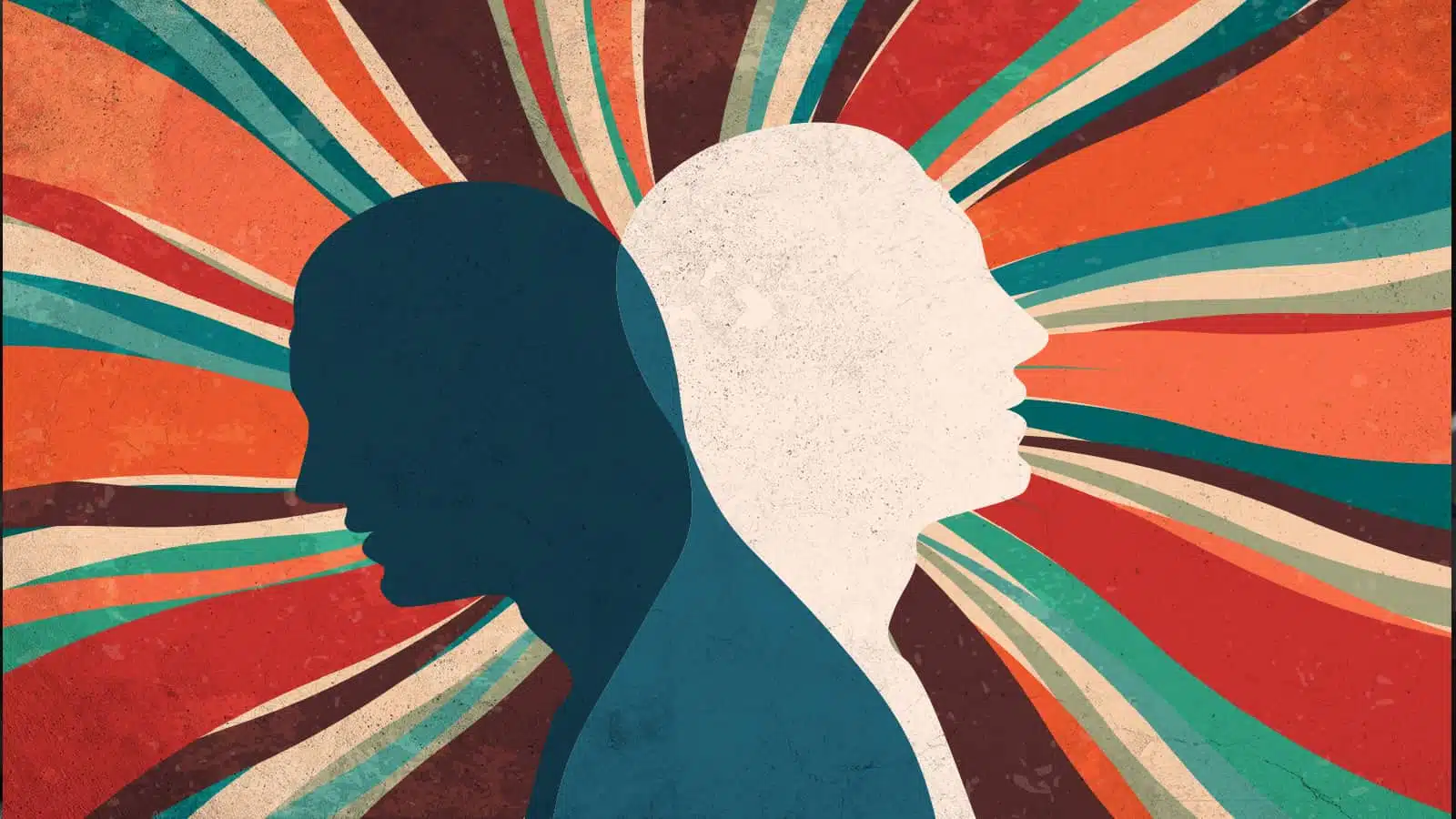Contents
Introduction

Jungian Therapy: Techniques, Applications, and Effectiveness
Jungian therapy is a type of psychological treatment that focuses on exploring the deeper aspects of the mind. It looks at how unconscious thoughts and feelings influence our behavior and aims to help individuals understand themselves better. Through various techniques, such as examining dreams and exploring personal symbols, Jungian therapy seeks to support personal growth and emotional well-being.
We will provide a thorough examination of Jungian Therapy, including its core concepts, distinctive techniques, and applications for various psychological conditions. Additionally, this article will address the criticisms and limitations of the approach and discuss its current effectiveness and relevance as a therapeutic method.
What is Jungian Therapy?
Jungian Therapy, or Analytical Psychology, is a therapeutic approach developed by Carl Jung, a Swiss psychiatrist and psychoanalyst. While it shares some foundational ideas with Freudian Psychoanalysis, such as the importance of the unconscious mind, Jungian Therapy introduces additional concepts that differentiate it. Central to Jungian Therapy is the belief in the collective unconscious—a shared reservoir of experiences and symbols common across humanity. Jungian Therapy also focuses on the process of individuation, where individuals integrate various parts of their personality to achieve psychological wholeness.
Why Jungian Therapy is Important?
Jungian Therapy is significant because it provides a comprehensive framework for understanding the depth and complexity of the human psyche. By emphasizing the role of archetypes and the collective unconscious, it offers a rich exploration of personal and universal symbols that influence behavior and emotions. This approach facilitates self-discovery and personal growth by helping clients integrate various aspects of their personality, including shadow aspects and inner conflicts. Jungian Therapy remains relevant for those seeking a deeper understanding of their inner world and striving for greater self-realization and balance.
Types of Jungian Therapy Techniques
- Dream Analysis: Jungian Therapy places significant importance on dreams as a window into the unconscious. Dreams are analyzed to uncover hidden aspects of the psyche and gain insight into personal conflicts and desires.
- Active Imagination: This technique involves engaging with images, symbols, or dialogues from the unconscious mind in a conscious and deliberate manner. It helps clients explore and integrate these unconscious elements into their waking life.
- Archetype Exploration: Clients are guided to understand and explore universal archetypes, such as the Hero, the Shadow, and the Anima/Animus, which represent fundamental aspects of the human experience and influence behavior and relationships.
- Symbolism: Jungian Therapy explores personal and collective symbols that emerge in dreams, fantasies, and artistic expressions. These symbols are seen as representations of deeper psychological truths and are analyzed to gain insight into the client’s inner world.
- Individuation Process: The therapy focuses on helping clients achieve individuation—a process of integrating different aspects of the self to achieve psychological wholeness and personal growth. This involves reconciling inner conflicts and developing a coherent sense of self.
- Shadow Work: Involves exploring and integrating the shadow—parts of the personality that are unconscious and often repressed. The goal is to confront and embrace these hidden aspects to achieve a fuller, more authentic self.
Understanding How Jungian Therapy Works
Jungian Therapy aims to help clients gain insight into their unconscious processes and understand how these influence their behavior, emotions, and relationships. By exploring the interplay between personal experiences and universal symbols, clients can develop a deeper understanding of themselves and work towards achieving psychological balance and self-realization. The therapy emphasizes building a strong therapeutic alliance where clients feel supported in exploring their inner world.
We will approach Jungian Therapy in phases: initially covering its essential concepts, then exploring its main therapeutic methods, and concluding with an evaluation of its effectiveness across different psychological issues.
Simple Overview
Core Idea: Jungian Therapy is based on the idea that our unconscious mind contains hidden thoughts and emotions that affect our behaviors and feelings. By exploring dreams, symbols, and inner images, this therapy helps individuals understand their inner conflicts and achieve a more balanced and authentic sense of self.
Real-Life Example: Imagine you frequently dream of being chased by a dark figure. In Jungian Therapy, a therapist would help you explore what this figure might symbolize—such as repressed fears, unresolved conflicts, or parts of yourself that you have not accepted. By understanding these symbols, you can start to integrate these aspects into your conscious awareness, reducing anxiety or stress
- Mythopoetic Identity: This concept refers to the exploration of one’s life as a personal myth. In Jungian Therapy, clients may be encouraged to view their life story through the lens of myth and archetype, helping them understand their experiences within a larger narrative framework. This approach fosters a sense of meaning and purpose in life.
- Temenos or Sacred Space: The therapy room is seen as a “temenos,” a sacred, safe space where the client and therapist explore unconscious material without judgment. This environment allows for deep psychological work, fostering trust and openness essential for transformative healing.
- Complexes: In Jungian Therapy, complexes are emotionally charged groups of associated thoughts and feelings that exist within the personal unconscious. These often stem from childhood experiences and unresolved conflicts. For example, a “mother complex” could affect one’s adult relationships. Therapy aims to identify these complexes and understand how they influence behaviors and emotional reactions.
Significant Aspects
Collective Unconscious: Jungian Therapy posits that there is a shared reservoir of experiences and symbols common across humanity that influences individual behavior and emotions.
- Theoretical Underpinnings: Jungian Therapy is built on the concept of the collective unconscious, a universal layer of the psyche shared by all humans, containing archetypes and universal symbols that shape individual experiences. Archetypes, such as the Hero or the Shadow, are fundamental symbols representing core aspects of human experience and influence how people perceive and interact with the world.
- Integration Techniques: Jungian Therapy employs several techniques to integrate unconscious material. Dream analysis is used to explore the symbols and themes present in dreams, offering insights into how archetypal influences affect personal issues. Active imagination involves engaging with unconscious content through creative expression, such as writing or art, to facilitate self-discovery and psychological integration.
In-Depth Analysis
Jungian Therapy incorporates cognitive, emotional, and symbolic elements to provide a holistic understanding of psychological issues.
- Cognitive Foundations: Jungian Therapy involves understanding how unconscious processes and archetypal symbols shape conscious thoughts and behaviors. By exploring these deep-seated elements, clients gain insight into how their unconscious mind influences their current experiences and mental states.
- Experiential and Emotional Processing:The therapy focuses on exploring personal and collective symbols, dreams, and inner conflicts. This experiential approach helps individuals process and integrate emotional experiences, leading to greater emotional healing and a more cohesive sense of self.
- Psychological Types: Jung’s extensive work on psychological types laid the foundation for what would later become the Myers-Briggs Type Indicator (MBTI), a widely used personality assessment tool. Each individual has a dominant function that shapes how they perceive and interact with the world, and understanding this dynamic can significantly enhance the therapeutic process.
Jungian archetypes

The Anima
The feminine aspect present in the unconscious of men. It embodies traits such as nurturing, intuition, and emotionality. The anima often appears in male dreams as a figure representing these qualities.

The Animus
The masculine aspect present in the unconscious of women. It represents traits like assertiveness, rationality, and logic. Like the anima, the animus can appear as a figure in female dreams or myths.

The Child
The child archetype symbolizes innocence, purity, and the potential for growth. It often represents the beginnings of development and renewal, embodying the promise of future potential.

The Father
The father archetype represents authority, law, order, discipline, and protection. Like the mother, it can be both nurturing and controlling. It often symbolizes the structure and guidance in society

The Hero
The hero archetype represents the individual who embarks on a journey or quest, often facing trials, slaying monsters, and overcoming challenges to achieve personal growth or a greater good. It is central to many myths and stories.

The Maiden
The maiden is often associated with purity, innocence, and beauty. She represents the potential for growth, often linked to the female aspect of youth or newness, as well as the unfolding of a deeper journey.

The Mother
This archetype represents nurturing, protection, fertility, and creation. It can manifest as a literal mother figure, but also symbolically in forms such as Mother Earth, goddesses, or fertility symbols.

The Persona
This is the mask or outward face we present to the world. It reflects our social roles and the identity we show to others, often influenced by societal expectations.

The Self
Represents the unified consciousness and unconsciousness of an individual. It symbolizes the process of individuation, where a person integrates different aspects of their personality to become whole.

The Shadow
The shadow archetype embodies the darker, unconscious parts of ourselves—those qualities we reject or deny, such as repressed instincts, desires, and weaknesses. It can appear as a figure or antagonist in dreams and stories.

The Trickster
The trickster archetype embodies mischief, chaos, and unpredictability. Tricksters often challenge the status quo, deceive, or play jokes, but they also bring transformation and insight. They can be both destructive and creative forces.

The Wise Old Man/Woman
This archetype represents wisdom, guidance, and knowledge. It often appears as a mentor or teacher figure who helps the hero on their journey. Examples include spiritual leaders, shamans, and sages.
Notable Figures in Jungian Therapy
Jungian therapy these individuals have expanded on Jung’s foundational ideas, contributing to a deeper understanding of the psyche and the therapeutic process. Here’s an introduction to some of the key figures in Jungian therapy:

- Carl Jung: The founder of Analytical Psychology, Jung’s theories on the collective unconscious, archetypes, and individuation have profoundly influenced modern Jungian practices. His work explores the deep layers of the unconscious mind and the symbolic elements that shape human behavior and experience.
- Marie-Louise von Franz: A close collaborator of Jung, von Franz is renowned for her work on dream analysis and the interpretation of fairy tales as psychological symbols. Her contributions have enriched the understanding of how archetypal images and narratives influence personal and collective psychology.
- James Hillman: A prominent Jungian psychologist, Hillman expanded on Jung’s ideas, particularly in archetypal psychology and the study of mythology. His work emphasizes the role of archetypes in shaping human experience and has influenced contemporary Jungian thought.
- Aniela Jaffé: A Jungian analyst and biographer of Carl Jung, Jaffé is known for her work on Jung’s concepts and her contributions to understanding the individuation process. Her writings provide valuable insights into Jung’s theories and their practical applications in therapy.
Learn from the experiences of influential psychologists by visiting our blog.
Applications of Jungian Therapy in Treating Mental Health Disorders

Depression
Jungian Therapy can be effective in treating depression by exploring unconscious conflicts, unresolved issues, and personal symbols that contribute to depressive symptoms. By understanding these underlying factors, clients can gain insight and work towards emotional healing.
Example: A client experiencing depression might discover that their symptoms are linked to unresolved conflicts related to their personal identity and self-worth, which can be addressed through exploring archetypal themes and integrating shadow aspects.
Image Source: therapyforblackgirls.com

Anxiety Disorders
Jungian Therapy helps individuals with anxiety disorders by uncovering the underlying psychological conflicts and symbolic meanings contributing to their anxiety. Understanding these unconscious influences can lead to greater self-awareness and symptom relief.
Example: A person with anxiety might use Jungian Therapy to explore how unconscious fears and archetypal symbols, such as the Hero or the Shadow, influence their anxiety, leading to a more comprehensive understanding and management of their symptoms.
Image Source: hhills.com

Personality Disorders
Jungian Therapy is effective for treating personality disorders by addressing deep-seated emotional conflicts, archetypal patterns, and relational dynamics that shape personality. It helps clients integrate various aspects of their self to achieve greater psychological balance.
Example: For someone with Borderline Personality Disorder, Jungian Therapy might focus on understanding and integrating the shadow aspects of their personality, helping to address issues related to self-esteem and interpersonal relationships.
Image Source: lpowerofpositivity.com

Relationship Issues
Jungian Therapy is beneficial for addressing relationship issues by exploring how unconscious dynamics, archetypal patterns, and personal symbolism influence interpersonal interactions. It helps clients understand and improve their relational dynamics.
Example: A couple facing communication problems might use Jungian Therapy to explore how their personal archetypes and unresolved inner conflicts impact their relationship, leading to greater understanding and resolution of conflicts.
Image Source: lovepanky.com
Common Myths About Jungian Therapy
| Myth | Reality |
| Jungian Therapy is only about interpreting dreams. | While dream analysis is a significant component, Jungian Therapy also focuses on exploring archetypes, symbols, and the individuation process. |
| Jungian Therapy is outdated and not relevant today. | Jungian Therapy remains relevant, offering valuable insights into the unconscious mind, archetypes, and personal symbolism. |
| Jungian Therapy is only for those interested in spirituality. | Although it explores deep psychological and symbolic themes, Jungian Therapy is applicable to a wide range of psychological issues and personal growth. |
| Jungian Therapy is too abstract and lacks practical applications. | Jungian Therapy integrates practical techniques, such as active imagination and dream analysis, to address psychological issues and promote personal development. |
Criticisms and Limitations
- Lack of Empirical Evidence: Jungian Therapy has faced criticism for having less empirical support compared to approaches like Cognitive Behavioral Therapy (CBT). Despite this, recent research efforts are addressing this gap by exploring the therapy’s effectiveness and applicability in various contexts.
- Complexity of Concepts: The abstract nature of Jungian concepts, such as archetypes and the collective unconscious, can be challenging for some clients to grasp and apply in therapy. This complexity may require a deeper level of engagement and understanding from clients to fully benefit from the therapeutic process.
- Focus on Symbolism: Critics argue that the emphasis on symbols and archetypes in Jungian Therapy may overlook practical solutions for immediate problems. However, Jungian Therapy integrates these symbolic elements to enhance self-understanding and personal growth, which can ultimately address both deep-seated and present-day issues.
Conclusion
Jungian Therapy offers a profound approach to understanding and integrating the unconscious mind, personal symbols, and archetypal patterns. By exploring these dimensions, clients can achieve greater self-awareness, emotional healing, and personal growth. Although it faces criticisms related to empirical evidence and complexity, Jungian Therapy remains a valuable therapeutic option for those seeking a deeper understanding of their inner world and striving for psychological wholeness.
References
- Jung, C. G. (1961). Memories, dreams, reflections. Vintage Books.
- Von Franz, M.-L. (1972). The interpretation of fairy tales. Spring Publications.
- Hillman, J. (1975). Re-Visioning psychology. Harper & Row.
- Jaffé, A. (1971). The life and work of Carl Jung. Harper & Row.
- McWilliams, N. (2011). Psychoanalytic diagnosis: Understanding personality structure in the clinical process. Guilford Press.
- Shedler, J. (2010). The efficacy of psychodynamic psychotherapy. American Psychologist, 65(2), 98–109.
- Jung, C. G. (1928). Psychological types. Routledge.
- Kernberg, O. (1975). Borderline conditions and pathological narcissism. Jason Aronson.
- Perry, B. D., & Szalavitz, M. (2006). The boy who was raised as a dog: And other stories from a child psychiatrist’s notebook. Basic Books.
- Yalom, I. D. (2002). The gift of therapy: An open letter to a new generation of therapists and their patients. HarperCollins.
- Jung, C. G. (1971). Psychological types. Princeton University Press.
- Jung, C. G. (1989). The archetypes and the collective unconscious (Vol. 9, Part 1). Princeton University Press.
Explore more Theories & Therapies








